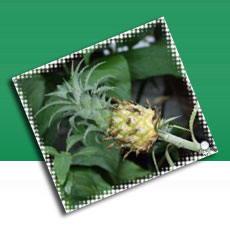THEORETICAL ASPECTS OF LIGNEOUS PLANTS INTRODUCTION IN BELARUS
Garanovich I.M.
Proceeding International Scientific Conferences
"Plant genefund accumulation, evaluation and protection in the botanical gardens"-
Vilnius - 1999. - P.16.
Central Botanical Garden of the National Academy of Science of Belarus. Minsk, Belarus
Summary: Some theoretical aspects of ligneous plants introduction in Belarus have been considered.
Key words: introduction, ligneous plants, theory
Introduction: Introduction of plants including ligneous ones is the process of involving studying and introducing in culture of species forms and cultivars from other regions of the world intro areas where they are not available in local flora. The history of introduction of ligneous plants in Belarus is apart of the history of botanical science and the country itself.
Material and methods. Widely using methods of climatic analogues, generic complexes as well as other methods such as agroclimatic analogues floragenetic and ecological historical analysis of flora paleobotany data introduction of ligneous plants in Belarus has got important theoretical and practical results.
Results and discussion. Theoretical justification is given to the influence of exogenetic factors of introduction area on plant development and growth its winter resistance. General rules of introduction adaptation have been revealed as well as factors limiting introduction in this country. Theoretical foundations of choice of introduction sources have been developed for some plants.
Important theoretical conclusions have been received when studying such integral indices of introduction success as winter resistance fructification. More attention is paid to different aspects of selection including hybridization and artificial metagenesis Hippophae, Desiphora, Weigela, Spiraea. Active introduction of plants is also carried out. We consider the combination of such stages as introduction nursery, arboretum production nursery areas of seed and vegetative breeding using artificial fog and cultivation instruments to be very important. The accumulated biodiversity of 2000 taxons from 56 families and 165 genuses allows to consider the present state introduction in the Central Botanical Garden to be completing the intensive stocking of collections. A new plan of introduction developed for the next 20 years consists of 2 parts most promising species and those introduction of which is desirable but complicated due to unacceptability and lower resistance. It includes 545 species and forms from 38 families and 102 genuses. Special attention will be paid to introduction of cultivars. Taking into consideration the duration of introduction due to the duration of ontogenesis of ligneous plants difficulties related with individuals in comp "on with populations great spatial transfer of objects as we 11 as availability of many factors in adaptation processes continuity of work is great importance.
Adaptation can be considered as multifunctional system of supporting homeostasis in new conditions. But this is not always possible. The problem should be considered with more differential scheme of the introduction process itself. Investigation can be conducted in some directions from theory to practice from practice to theory in both directions simultaneously and in other combinations.
Long term investigations of Hippophae in Belarus can be considered as an example. Many factors of vital activity of this plant have been investigated both in nature and in culture. All the works related with its introduction can be described by a scheme with five levels search and investigation of the original material investigation of forms and species in Belarus selection breeding introduction into practice selection in Belarus.
The suggested scheme fully reflects the state of the species introduction. It can be used as a model for other species. The model capabilities are due to the information available which reliability makes task soluble.
Conclusions. One can successfully solve biological and mathematical theoretical and practical tasks of biodiversity enrichment prognosis of directions and rates of introduction considering introduction with reference to information theory and homeostasis.

